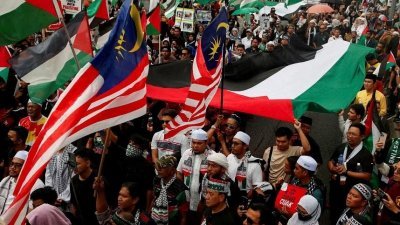马来西亚最被低估和最不受重视的行业可能就是渔业及渔民,特别是那些冒著生命危险出海捕鱼的人,贡献了大多数马来西亚人餐桌上的美食佳肴,但这就像其他食品行业中的食物一样被视为理所当然。
大多数人只有在享用鱼和其他海鲜时才会关注到渔业发展。而他们购买和食用海鲜时最关心的是,这些虾、鱼和其他海洋相关产品的品质和价格。
以城市为中心的人们很少或根本没有考虑到渔民社群──他们中许多人是小规模经营或手工捕渔(非大规模商业性捕渔)——他们出海捕捞,面对著种种困难与危险,勉强维持生计。这属于自雇人士 - 主要是马来人和土著。通常一出世就继承父亲和祖先的职业,直到如今,他们仍然使用传统的方式和渔船来捕获。
尽管时代变了,如今拥有了更先进船舶、更现代化的捕捞技术,使渔民能够去到更远海域和长时间的捕鱼。然而,今天,吉兰丹、登嘉楼、沙巴和砂拉越,以及全国各地渔民,依然是全国最贫困的一群。
贫困渔民
马来西亚登嘉楼大学最近对登嘉楼瓜拉马兰 (Kuala Marang) 和诗巴兰达基 (Sebarang Takir) 渔民进行的一项研究显示,这两个渔村的家庭平均收入分别为626美元/约2900令吉和755美元/约3500令吉。 这收入水平低于2016年家庭收入中位数,即1307美元/约6100令吉,只略高于全国中位数的一半。
尽管没有明确研究表明,但在我们的粮食安全中发挥关键作用,并负责为丰富马来西亚人的饮食和日常食物消费的生产社群的贫穷状况,自独立至今依然没改变。
这种贫穷情况为何依然根深蒂固,没有改善,这并不是因为缺乏政策制定者的关注。这似乎也不是因为缺乏资金,以推动改善渔民社区的方案和项目。
对渔民社区贫困状况的认识,可以追溯到新经济政策之前。政府提供的援助包括汽油和柴油补贴,以减轻燃油价格上涨的负担; 渔民生活津贴; 自然灾害和渔民福利的援助,这一切都可帮助渔民增加家庭收入,并减缓渔民及其家人在遇到事故时负担。除此之外,其他援助包括渔民住房特别计划,确保渔民房屋达到合理标准。
据报道,在2019年10月公布的预算中,政府继续为渔民提供每月250令吉的津贴,以支援渔民收入。此外,渔民还可以获得柴油补贴,以降低出海捕捞的成本。
尽管,当局偶尔会公布相关数据,但为改善渔民收入和生活的总体款项,并不容易获得。也没有任何关于改善渔民贫困状况的资金分配之官方分析。
渔业预算:钱都去哪了
在蛋白质获取上,特别是依赖鱼类作为蛋白质来源的B40群体而言,变得日益昂贵时,我们却不易取得渔业发展获得多少拨款的相关数据,以确保这重要蛋白质来源可持续供应。
我们知道,每年有庞大款项分配给渔民协会、码头基础设施和市场建设等。但要取得这些数据成果,即使不是不可能,也是非常困难的。如果有数据的话,也以几乎不可能分析的方式建构出来的。一些数据也可能受到官方机密法限制。
尽管无法获得具体数据,但估计在第12大马计划下,渔民和渔业获得的拨款高达数百亿令吉。因此,新经济政策以来,渔业获得拨款总额可能高达千亿令吉。 这估算是根据1969至2023年,渔业部门每年获得的拨款推算出来的。在1969年,渔业局获得1530万令吉拨款。到了1990年,年度拨款增加到6亿8000万。接著,2000年的年度拨款从16.5亿令吉增加至2023年的39亿5000万令吉。
关键问题是,为何投入了大量资金推动各项计划和项目,以改善渔民生活和收入,但渔民仍然是全国最穷的一群。
负责国家渔业发展的政府部门和机构,尽管获得更多拨款 。然而,其成果依然是令人失望。过去十年的官方数据显示,来自内陆、海洋和水产养殖的鱼产量,依然不足以满足国内需求。
换句话说,我们还未能够实现渔业自给自足。本国鱼产的自给自足水平(SSL)是令人震惊,尽管在过去60年来,为渔业发展和成长提供了庞大的预算拨款,同时与大多数国家相比,我国也享有巨大的比较优势,拥有丰富资源的沿海、海洋环境及自然生态。
事实上,我们应该能成为世界领先的海产国之一,而不是依赖于进口,并远远落后于没有如我国般给予渔业庞大财政援助和拥有自然资源的国家。
为何渔民仍然陷入贫困,为什么国家渔业发展未能发挥其潜力,而拨给渔业和渔民的数十亿令吉款项又去了哪里,这是每个人都应关心的重要议题,而不仅仅是享用著鱼肉的人拷问。
林德宜《为何海鲜如此贵 渔民如此穷》原文:Why Is Seafood So Expensive And Fishermen So Poor
Possibly the most underrated and under-appreciated sector in Malaysia is the fishing industry and its workers, especially those who venture out to sea to risk their lives to land the food which most Malaysians love but take for granted as if it is like any other item in the food industry.
Most people pay attention to the fishing industry only when they enjoy the fish and other seafood dishes during their meal. And their main concern when they buy and eat seafood is with the quality and the price of prawns, fish and other marine related products that go into their meals.
Little or no thought is given by our urban centric population to the community of fishers -many of them small scale or artisanal workers - who work on the sea and who eke out a difficult and dangerous living. These are self employed families - mainly Malay and Bumiputra. Usually born into and carrying on the occupation of their fathers and forefathers, the male heads of these households, until recently, were tied to traditional methods and boats to land their catches.
Times have changed and mechanization of boats and modernization of fishing technology have enabled the fishing community to venture further to sea and for longer fishing hours.Yet, today, the present generation of fishers in Kelantan, Terengganu, Sabah and Sarawak, and other fishers found in small numbers in all the states of the country, are amongst the poorest households in the nation.
Poverty of the Fisher Community
A recent study by academics from Universiti Malaysia Terengganu of Terengganu fishermen from Kuala Marang and Sebarang Takir found the sampled fishermen to have average household incomes of USD 626 and USD 755 respectively in the two surveyed areas. These incomes are respectively less than half and slightly more than half of the national median household income of USD 1,307 in 2016.
Although there have been no definitive studies, this situation of pervasive poverty of a community of food producers who play a critical role in our food security and are responsible for enriching the diet and everyday food consumption of Malaysians has continued non-stop since independence.
Why this poverty has remained entrenched and has not been corrected Is not due to a lack of attention by policy makers. Neither does it appear to be due to a lack of funding for programmes and projects targeted at the fishers community.
Recognition of the poverty status of the fisher community goes all the way back to the pre-NEP period. Among the government assistance provided include petrol and diesel subsidies to reduce the burden of rising fuel price; fishermen’s subsistence allowance (Bantuan Sara Hidup Nelayan); aid for natural disaster and fishermen’s welfare (Skim Bantuan Bencana Alam and Kebajikan Nelayan) to help fishermen increase their household income and to improve the livelihood of fishers and their families in the event of accidents or disaster.
Apart from that, other aid includes special housing programs (Project Khas Perumahan Nelayan) to ensure that the fishermen's houses are of a reasonable standard.
In the federal budget announced in October 2019, it was reported that the government would continue to provide fishers with monthly allowances of RM250 as income support. In addition, fishers also receive a diesel subsidy of $0.53 per liter to reduce the cost of going to sea.
Although occasional data is provided, overall computation of how much budgetary support has been provided to improve the incomes and lives of our fishers is not easily available. Neither is there any official analysis of how the funding allocation to the fisher community has impacted on reducing their poverty status.
Fisheries Budgets: Where Has the Money Gone
There is also no easily available data on how much funding has gone into the development of the fisheries industry to ensure a sustainable supply of a vital source of protein which has become expensive for everyone, especially the B40 group that has relied on fish as a source of cheap protein.
We know that very large sums have been allocated to Fishermen Associations, fish complex infrastructure, marketing infrastructure, etc. in the annual budgets. But getting data on the outcomes of such expenditure is very difficult if not impossible. If there is data it appears to be reconstituted in such a way as to make it almost impossible to analyse. Some of the data may have also come under the restrictions of the official secrets act.
Despite the specific data unavailability, it can be assumed that the total amount allocated to the fisher community and the fishing industry runs into the tens of billion ringgit during the 12 Malaysia Plans implemented. It is possible that the total budget allocation for fisheries since the NEP may be in the hundred billion ringgit range. This estimate is based on the annual budget allocation of the Fisheries Department from 1969 to 2023. In 1969, RM 15.3 million was provided to the Department. By 1990, this annual allocation had grown to RM680million. Since 2000, the annual budget allocation has increased from RM1.65 billion to RM3.95 billion in 2023.
The key question is why is it that, despite the enormous sum spent on programmes and projects intended to benefit the fishers community, the community remains amongst the poorest in the country.
Even larger funding has been allocated to the government ministries and agencies responsible for the nation’s fisheries development. Here again the results have been disappointing. Official data during the past decade shows that the nation’s fish production from inland, marine and aquaculture sources has never been sufficient to meet domestic consumption. In other words, we have never been able to attain self sufficiency in fisheries.
The nation's self-sufficiency level (SSL) in fish production is shocking since, besides the very generous budgetary allocations provided to stimulate growth and development during the past six decades, the nation enjoys a tremendous comparative advantage compared to most other countries in our rich coastal and marine environment and natural resources.
In fact we should be one of the leading marine and fish production nations in the world rather than one that has to rely on imported marine products and is lagging behind other countries that do not have the same financial and natural resources that Malaysia has.
Why the fisher community remains trapped in poverty, why the nation’s fishing industry has not been able to fulfil its potential and where the billions of ringgit allocated to fisheries and fishing households has gone to are important questions that everyone, and not only those who enjoy a fish meal, should be asking.
要看最快最熱資訊,請來Follow我們 《東方日報》WhatsApp Channel.


















